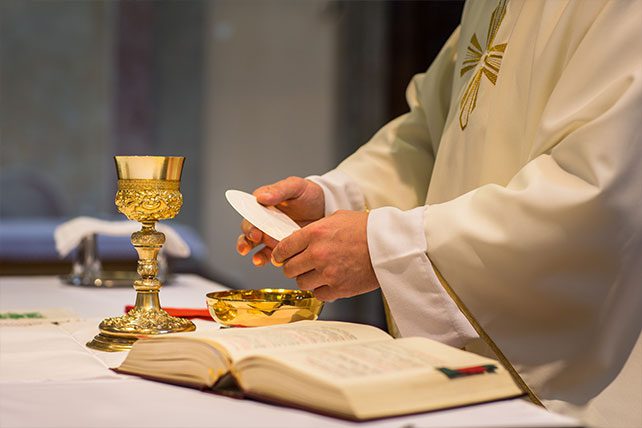Christian liturgy and worship form the bedrock of communal and individual spiritual life within various Christian denominations. This structured pattern of worship, deeply rooted in centuries-old traditions, serves as a bridge connecting the faithful with the divine, fostering a strong sense of community and spiritual growth.
Worship: Definition and Origins of Christian Liturgy
The term ‘liturgy’ originates from the Greek word “leitourgia,” which translates to “the work of the people” or “public service.” In the Christian context, liturgy refers to the set patterns, rituals, and practices of worship that are carried out by a congregation. This communal act of worship is not just about individual spiritual experiences but about participating in a shared tradition that spans generations and cultures.
The roots of Christian liturgy trace back to Jewish worship practices, notably the synagogue services and the Temple rituals in Jerusalem. Early Christians, coming from Jewish traditions, initially retained elements of Jewish worship, such as the reading of Scriptures and communal prayers. However, as Christianity spread and evolved, distinctive Christian practices began to emerge, such as the Eucharist (or Communion), which Jesus himself instituted at the Last Supper. Over centuries, these practices were formalized and diversified across different Christian traditions, shaping the rich variety of liturgical worship we see today.
Elements of Christian Liturgy
Christian liturgy encompasses a variety of elements designed to facilitate a deep, communal worship experience. These elements serve as the building blocks of the service, guiding the congregation through a journey of reflection, prayer, and connection with God.
- Prayers: Prayer is the heart of the liturgy. This includes corporate prayers, where the congregation prays together, and intercessory prayers, where the needs of the church and the world are brought before God. The Lord’s Prayer (Matthew 6:9-13) is a central component, often recited by the entire assembly, reflecting unity and communal petition.
- Scripture Readings: Liturgical services typically include readings from the Old Testament, Psalms, Epistles, and the Gospels. These readings are organized in a lectionary, providing a structured approach to exploring the Bible throughout the liturgical year. This ensures that over a set period, usually three years, a significant portion of the Bible is presented to the congregation.
- Hymns and Music: Music and singing are integral to liturgical worship, providing a way for the congregation to express their faith and emotions collectively. Hymns are selected to reflect the liturgical season and the specific themes of the service. Music ranges from traditional hymns to contemporary Christian songs, depending on the denomination and cultural context.
- Sermons: The sermon, or homily, is a central element where the Word of God, as read in the Scriptures, is expounded and applied to the lives of the listeners. It serves as a bridge between the scriptural readings and the lives of the worshippers, providing insight, encouragement, and challenge.
- Sacraments: Sacraments are ritual actions considered to embody God’s grace. In liturgical churches, the Eucharist (or Holy Communion) is the central sacrament, reenacting the Last Supper. Other sacraments may include Baptism, Confirmation, Reconciliation, Marriage, Holy Orders, and Anointing of the Sick, though their frequency and understanding vary among denominations.
RELATED: Communion Scripture: Exploring This Sacrament’s Biblical Roots
The blending of these elements within the framework of a liturgical service creates a rich tapestry of worship that engages believers in a comprehensive spiritual experience.

